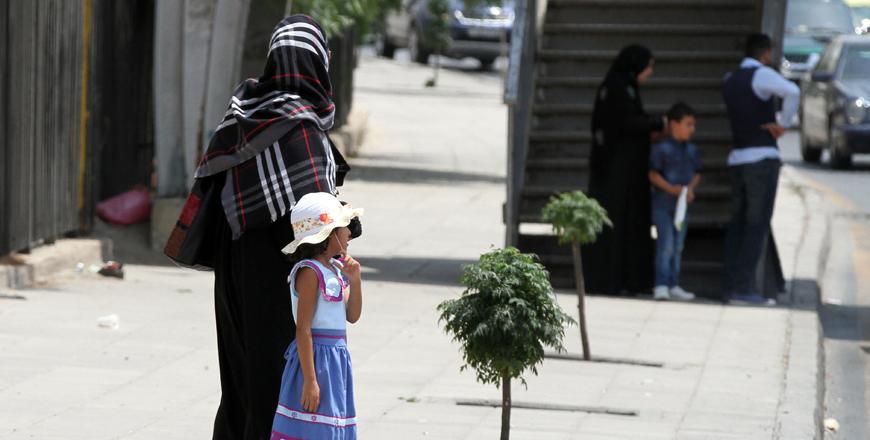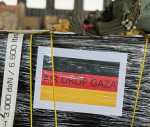You are here
‘Slight’ rise in temperatures forecast as effect of hot air mass starts Saturday
By Muath Freij - Aug 13,2015 - Last updated at Aug 13,2015

Mercury levels in the capital will range between a high of 35°C and a low of 21°C on Saturday (Photo by Osama Aqarbeh)
AMMAN — A hot air mass will start affecting the Kingdom on Saturday, raising temperatures by three-to-five degrees above the annual average, a Jordan Meteorological Department (JMD) official said on Thursday.
“However, the new weather conditions will not be similar to the recent heatwave that hit the country,” Raed Rafed, who heads the JMD’s forecasting division, told The Jordan Times over the phone.
He noted that temperatures will only increase one degree on Friday, ranging between a high of 32°C and a low of 20°C in Amman.
Temperatures in Aqaba on Friday will be between 28°C and 41°C, according to a JMD statement.
Rafed said mercury levels in the capital will range between a high of 35°C and a low of 21°C on Saturday, while they will be between 36°C and 23°C on Sunday.
The forecaster urged the public to avoid prolonged sun exposure on Sunday during the afternoon.
“There could be some dust-raising winds in the badia and desert areas on Sunday but not similar to the recent dust storms that hit the Kingdom,” Rafed added.
The last heatwave, which affected Jordan and the region earlier this month, brought light rain to Tafileh, Qatraneh, Karak and Zarqa’s Duleil area as a result of unstable weather conditions, whereas southeastern and eastern areas in Jordan witnessed dust storms and low visibility that caused flight delays and diversions at Queen Alia International Airport.
During the heatwave, temperatures soared to 42°C in Amman, 47.5°C in Deir Alla and 45.5°C in Aqaba, with humid weather conditions.
The JMD announces a heatwave when temperatures rise five degrees above their annual average for a period of more than three days.
In previous remarks to The Jordan Times, JMD Director General Mohammad Samawi underscored that the intensity of hot spells depends on the route of air masses, explaining that strong heatwaves that push temperatures well above their annual averages usually come from the northeastern parts of the Arabian Peninsula, originating from India.
The meteorologist said the capital witnessed 61 heatwaves over the past 92 years, with the longest hot spell, which lasted for six days, occurring in July 1978.
The highest temperature ever recorded by the JMD in Amman was 43.5ºC in July 2000 and in August 2010, according to department data.
Nationwide, the highest temperature ever recorded in mountainous areas was in Salt in August 2010, when it reached 41.6ºC, while the highest temperature in the badia and eastern plains was registered in July 2010 when it reached 47.2ºC.
Related Articles
The country will remain under the impact of a hot air mass for the rest of this week, with temperatures expected to rise three to four degrees above their annual average for this time of the year, a meteorologist said on Monday.
AMMAN — Thursday marks the first day of summer, according to the Jordan Meteorological Department (JMD), which indicated that temperatures d
AMMAN — The heatwave that has affected the country since Monday will continue until next Sunday, the Jordan Meteorological Department (JMD)

















